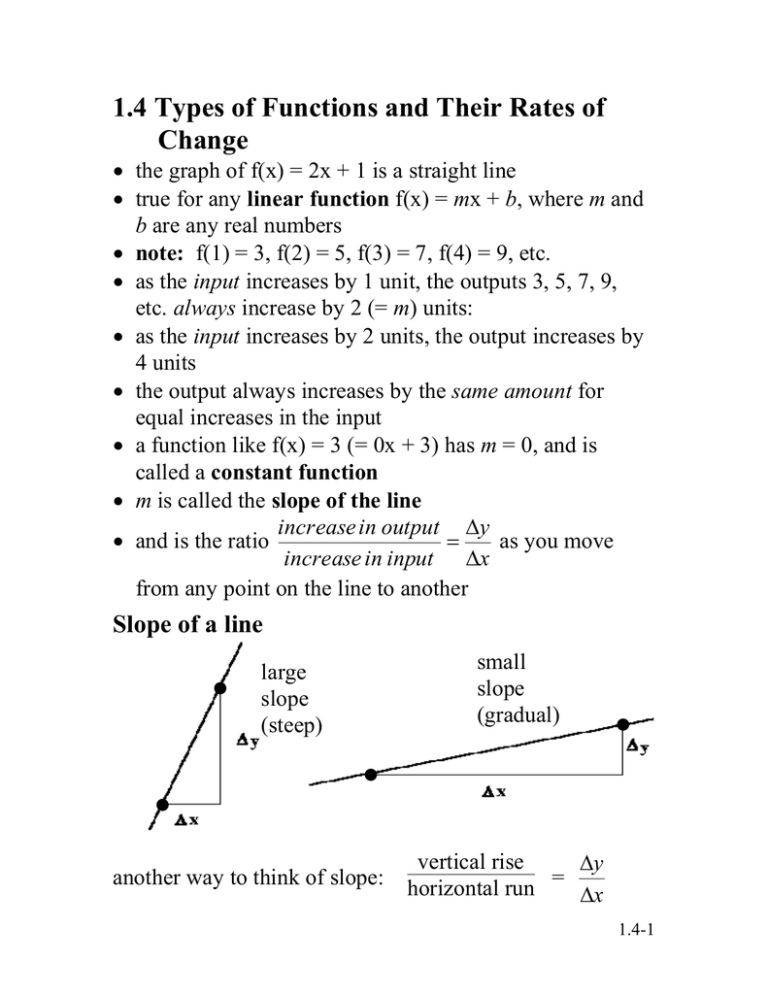1.4 Types of Functions and Their Rates of Change
advertisement

1.4 Types of Functions and Their Rates of Change the graph of f(x) = 2x + 1 is a straight line true for any linear function f(x) = mx + b, where m and b are any real numbers note: f(1) = 3, f(2) = 5, f(3) = 7, f(4) = 9, etc. as the input increases by 1 unit, the outputs 3, 5, 7, 9, etc. always increase by 2 (= m) units: as the input increases by 2 units, the output increases by 4 units the output always increases by the same amount for equal increases in the input a function like f(x) = 3 (= 0x + 3) has m = 0, and is called a constant function m is called the slope of the line increase in output y and is the ratio as you move increase in input x from any point on the line to another Slope of a line large slope (steep) another way to think of slope: small slope (gradual) vertical rise y = horizontal run x 1.4-1 Computing slope, given two points In general, given two points (x1, y1) and (x2, y2), the slope of the line passing through them is y2 - y1 m=x -x (slope formula) 2 1 Kinds of slope 1.4-2 Slope as rate of change In 1998, the value of an investment was $2540. It is projected to in increase by $100 per year ($100/year) notice the “per” - that’s the key word for a rate o think of “50 miles per hour” - it’s a rate (of speed) the $100/year is referred to as a rate of change slope = rate = 100 $/yr 100 1 x 1.4-3 Average rate of change on an interval a non-linear (curved graph) function has no fixed slope therefore no constant rate of change but we can still talk about average rate of change (on a given interval) consider traveling in a car that goes at a variable speed o slow at first o then gradually increasing in speed here’s the graph of distance vs. time (the solid line): d (3, 100) (0, 0) t the car is at the 100 mile mark in 3 hours what is its average speed (average rate of change) on the interval 0 to 3 hrs? r = d/t = 100/3 = 33 1/3 mph and it is just the slope of the dotted line: m = (100 - 0)/(3 - 0) = 33 1/3 mph for different intervals, the average rate of change would be different 1.4-4



